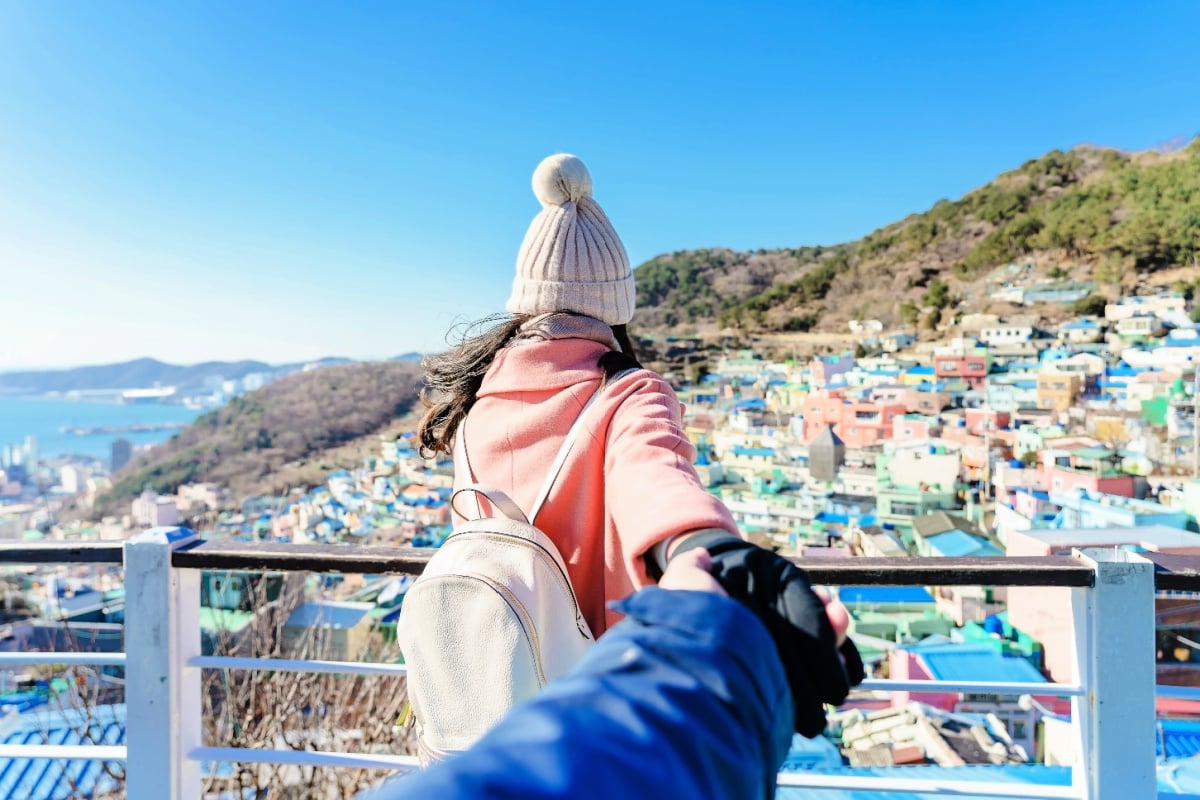Southern Korea is one of the top spots in Asia for digital nomads now, having resulted in an important ‘soft power’ in recent years, following export of K-pop, doramas, along with other art forms, and trending for its high-quality of life and relative affordability.
With that said, most nomads landing into the eastern Asian country stay in Seoul, its radiant capital and largest metropolis, and become remaining a majority of their time indeed there, ignoring additional destinations that are equally incredible.

As it ends up, Seoul is not Korea’s only nomad hotspot, as an equally powerful rival on Southeastern coast has been surging in appeal lately:
Everyone, Meet Busan
When it comes to Southern Korea’s digital nomad scene, Seoul frequently gets all the attention, plus it’s easy to understand.
This is the largest town, after all, featuring high-speed net connection, great transportation backlinks, and unrivaled entrepreneurial atmosphere, however it is most certainly not the only real world-class Korean metropolis or imaginative hub.

Busan, in the Southeastern coast, could be the country’s second-largest town and a hectic slot with over 3.4 million residents, which is in the same way well equipped a nomad destination as Seoul, except it straddles the ocean. It’s smaller and will feel way less crazy.
Right here, there are the exact same world-class metropolitan infrastructure, with a fantastic general public transport system that may allow you to get anywhere you may need in the Metropolitan region, more and more pedestrianized main districts, affordable housing and an ample collection of coworking centers.
How Come Busan Unique?

Busan is exclusive into the sense that it is a sprawling metropolis bounded by both hills and the sea, snaking along thin valleys, following course of the historic Nakdong and Sueyong streams, and also coating the oceanfront.
Infrastructure-wise, it may possibly be much like Seoul, however it has an entirely various personality altogether. Becoming in the middle of nature, it could feel more relaxed, rather than since hectic as 10 million-people strong inland money.
The aforementioned Nakdong River is Korea’s longest, and something of the most extremely well-known tasks in Busan is walking the Nakdonggang Riverside Trail, a multi-lane boardwalk for pedestrians and cyclists.

The trail spans, in reality, all of the extent of this lake, which can be 230 kilometers very long, hence connecting Busan to Andong, a town in Northern element of Southern Korea, but within Busan proper, it makes for a peaceful promenade from the downtown area to your external suburbs.
Busan Has Actually Gorgeous Beaches
Busan is also extremely desired because of its beaches, being lapped by long, smooth, golden-sand crescents, and home towards the iconic Haeundae seashore, South Korea’s biggest and best-frequented.

Throughout the summer months, Haeundae is brimming with life and sunbathers looking to capture a tan under the unforgiving East Asian sunlight.
In the off-season, particularly spring and autumn, its perfect for contemplative, early-afternoon strolls from the sand and admiring the sweeping views of Busan’s maritime interface more within the distance, among largest and a lot of economically essential in the whole world.
Of course, the ocean is a giant element of Busan’s charm to long-lasting site visitors. The city’s economic climate is greatly reliant on ocean trade, and thus, the seaside is very developed.

Aside from shores, nomads arrive at enjoy seaside parks in their leisure time, like Taejongdae, in which climbing tracks and viewing platforms provide special views of the durable coast, marvel at landmark bridges – including Korea’s second-largest – and gorge on some tasty fish.
Busan is probably South Korea’s foodie money, and there’s not a way you can deduce your nomadic stay with out sampled classics like fish and shellfish porridge, soy-marinated natural crabs, or sliced up raw seafood from local fish markets.
Another reason why Busan is trending with nomads is its cultural weight.
Busan Is An Underrated Cultural Hotspot

Yes, it’s a modern maritime slot and monetary center, but under the surface lies a far older, more conventional Korean settlement that’s however is totally eradicated by the quick industrialization for the Korean coast.
Among Busan’s top social destinations is Gamcheon Village, a hillside area in which the small, agglutinated houses are painted in bright colors together with slim alleys are lined with vibrant road art alongside whimsical installments, in a similar way to South America’s underdeveloped barrios.
Busan also houses Beomeosa Temple, a picturesque Buddhist complex nestled on a hilly, forested location from the groups of skyscrapers and towering apartment blocks.

An old treasure of Korea, it had been founded since 678 advertising, and it also stands being among the most easily-recognized Korean architectural feats globally.
Nomads are enamored with Busan since it is a city that just oozes creativity, and its particular community transport is solid evidence of that.
Busan’s Creative Vibes Tend To Be Unparalleled
No trip to Busan is complete without a scenic trip on a Haeundae Sky Capsule, a 4-seater retro tram with a colorful exterior – generally electric blue, deep purple, light-yellow and green, operating on a 2.3 km-long elevated railway linking the coastline zones of Mipo to Cheongsapo.

The colors emulate compared to the accompanying Haeundae Beach Train, which moves along the scenic oceanfront between Mipo and Songjeong, therefore’s the world’s very first battery-charged as well as perhaps probably the most eco-friendly transport modes.
Busan’s many monorails tend to be another enjoyable solution to get around and explore, traveling upward the hilly cityscape and exposing breathtaking panoramas regarding the lively streets below.
Naturally, one of the most significant reasons why nomads tend to be flocking to Busan may be the affordable lifestyle.
Busan Is Much More Inexpensive Versus Seoul

Rent in Busan could be to 71.2percent less than in Paris, an important digital nomad hotspot in Western World, as seen on Numbeo, and a single person’s calculated month-to-month costs tend to be US$919.70 without rent.
You ought to expect you’ll find road meals for since cheap as US$6.07, normally, and a restaurant bill for two individuals in a mid-range restaurant should total approximately US$31.29 around.
These often reflect costs for locals and long-lasting visitors.

According to BudgetYourTrip, short-term travelers spend on average US$88 daily in Busan, with the average US$26 on meals and US$21 on community transport, which makes it a somewhat affordable destination working from from another location for a finite period of time.
Seoul is somewhat more expensive, with expected everyday expenditures for tourists averaging US$109 every day.
Though South Korea has not yet launched a Digital Nomad Visa, U.S. passport holders can go into the nation and remain visa-free for up to 90 days.
Read More:
Top 5 travel cover tactics For 2023 Starting At $10 each week
How To Definitely Obtain Points Free-of-charge Travel
↓ Join Our Community ↓
The Travel Off Path Community FB group features all the newest reopening news, conversations, and Q&A’s happening each day!

SIGN UP TO your HOTTEST ARTICLES
Enter your current email address a subscription traveling Off Path’s newest breaking vacation development, right to your inbox.
This article originally appeared on TravelOffPath.com
Resource website link

